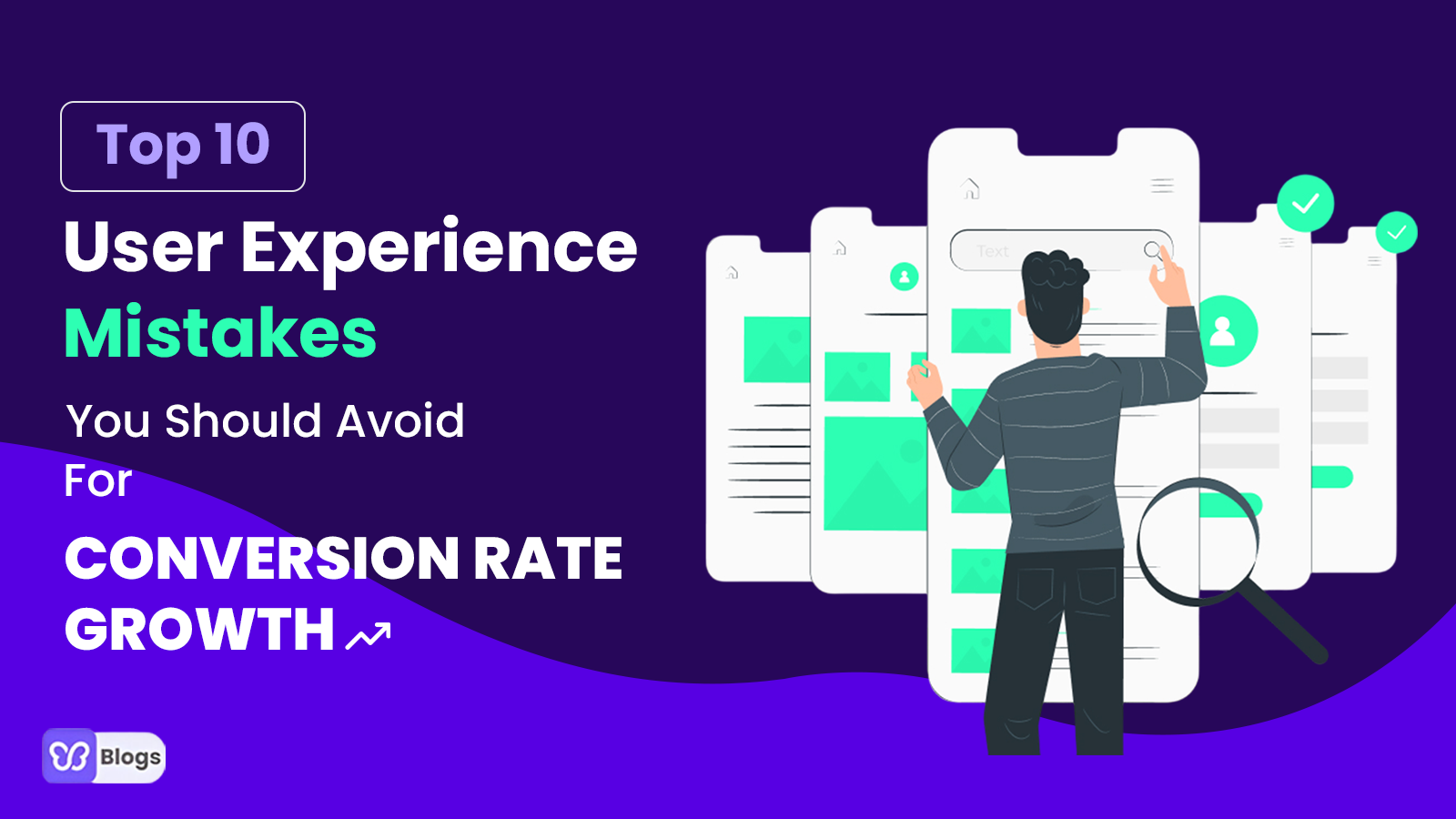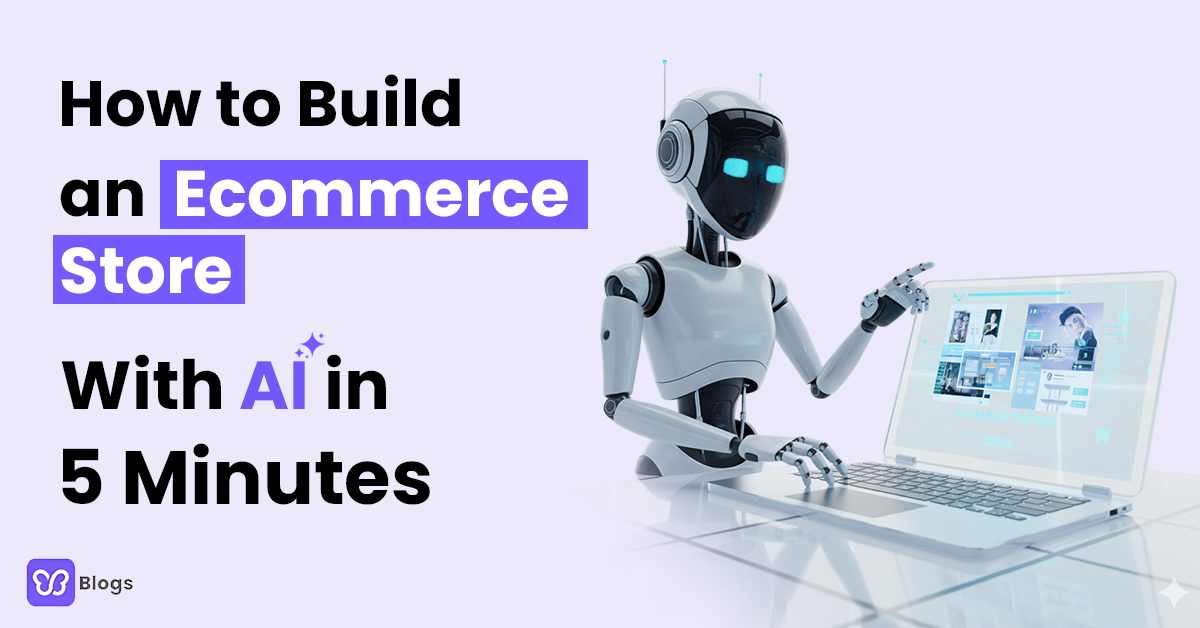Ecommerce has become more powerful than ever before. Many brick-and-mortar stores have decided to take their business online during the pandemic to reach their potential customers. According to a Forbes article, “Covid-19 pushes up internet use by a whopping 70%”.
With so many people creating websites online, it has become critical for online sellers to develop websites that differentiate their business from the rest of the competition.
Picture that: You enter an e-store selling custom footwear online. Everything is haphazard on the floor. There's a sales rep busy playing games on a smartphone. The first impression you get is enough to make a U-turn and check out other options.
The second store you visited has everything in place. There's a smiling salesman who is eager to help you out at every stage. Everything is labeled, discounts are mentioned, and there's a 15% sale on your favorite items.
It goes without saying that you'll choose the second store right away for your current and future purchases.
User experience matters...
Especially when you're working in a highly competitive space like ecommerce, you have to make every possible effort to keep your buyers happy.
Doing so will not only help you create a loyal customer base but also improve your conversion rate growth.
Take an example of retail and dropshipping giants like Amazon, Etsy, and Walmart here. These stores have optimized everything on their stores to ensure the best user experience - be it recommendations, navigation, customer service, or returns.
Although user experience is one of the essentials of a profitable ecommerce strategy, many businesses still fail to benefit from it the right way.
In this post, we're going to highlight some of the common user experience mistakes we all make at some point. The good news is avoiding these mistakes is easier than you think. Also, repairing them will have a significant impact on your conversion rate growth.
What Is User Experience?
User experience (UX) revolves around factors that contribute to a user's interaction with a brand. The UX concept also encompasses how customers feel about a product or a service and how it meets their needs and standards.
It is a broad concept and involves the overall experience a customer has with a brand.
Businesses that fail to offer the best user experience tend to face challenges in terms of conversions and retention. The process of improving user experience focuses on understanding the needs and wants of your customers.
Why Is It Important For Your Online Business?
User experience is all about creating positive feelings about a brand when a customer enters and explores your online store. Positive UX will lead to happy customers, while a negative experience will increase your chances of losing a long-term loyal customer.
The biggest mistake online sellers make is that they confuse user experience optimization with conversion optimization. Here, it is critical to understand that these two terms are entirely different.
User experience optimization is the process of creating a positive user experience. It is all about increasing satisfaction and usability.
Conversion rate optimization revolves around those practices that help you improve conversions and sales for your online store.
While both these terms are different, they're strongly interconnected. How? The positive user experience will lead to increased conversions and vice versa.
Benefits Of User Experience Optimization
Improved Customer Retention
Have you ever wondered why people prefer shopping from Amazon? Amazon offers its buyers the best user experience. From reviews to pricing and deals to delivery, everything is mentioned on the platform.
You know you'll get the best value for your money when you buy from trusted retail platforms.
The same goes for your ecommerce store. When your customers feel that your website is easy to use and values their privacy, they will continue coming back for more. That also decreases your churn rate, improves the retention rate, and builds loyalty.
Improved Conversion Rates
Knowing user expectations and offering personalized services will have a direct impact on your conversion rate.
Customer Recommendations
Happy customers will become your brand advocates. They not only will prefer your brand for their use but also recommend it within their social circles.
Now that you know why improving user experience is critical for your online business success, it's time to see how you can measure it. Remember, if you don't understand these metrics, you can't improve.
How To Measure User Experience (UX)?
Compared with revenue and sales data, the hard data for user experience testing is not always available, making it challenging for online sellers to know where they're standing at the moment.
Luckily, there are still ways you can follow to gauge the viability of your user experience optimization strategy.
Customer Satisfaction
Using a CSAT score is an effective way to measure customer satisfaction. You can calculate this score by asking your customers to rate their experience on a 1-10 scale and then calculating the average by dividing the total score by the total number of respondents.
Chances Of Recommendations
NPS is another metric that you can use to calculate the likelihood of getting referrals for your brand. You can calculate the Net Promoter Score by subtracting the percentage of negative respondents from positive ones.
Goal Completion
Another metric to determine the satisfaction level of your customers is the CES score. CES score enables you to calculate the total number of customers who have accomplished their goals.
Here are some mistakes you should avoid as an online entrepreneur to improve the user experience.
Top 10 User Experience Mistakes You Should Avoid For Conversion Rate Growth
1. Overlooking First Impressions
The first impression is the last. Even if you have the best products in the world, failing to engage your visitors can cost you a lot in the long run.
Remember, you only have 2-minutes to capture the attention of your potential customers. Failing to engage your audience within this span will result in losing customers who can become your loyal customers over time.
Neilsen Norman's study reveals that the visitors usually scan the site following an 'F' pattern - a headline, a few points under that heading, another header, and content listed down the page. So, you can also choose this design for your store for better conversions.
2. Slow Site Speed
Slow site speed is the major turn-off for the majority of visitors. Make sure you use the Google PageSpeed tool to check your current website speed. Here are a few things you can do to improve your website speed:
- Use the premium version of the hosting you’re using for your website
- Compress images and videos
- Get rid of apps and plugins you’re not currently using
- Use a CDN
- Leverage browser caching
- Minify CSS and Javascript
3. Complicated Checkout Process
Nobody likes to fill out multiple forms to complete a simple transaction. Try to minimize the number of pages you have for your checkout process.
Include a guest checkout option on your website so that your customers can complete the transaction without having to sign up or create an account.
Even if you're asking your visitors to fill out forms for you, thank them in the end. Take a step further and reward them with a coupon code or any other incentive. After all, everybody likes to receive free stuff.
4. Not Promoting Free Delivery And Discounts
Online buyers love free stuff, deals, and discounts. When customers know that they'll receive a freebie in exchange for their interest, they're more likely to visit your store again and again.
Failing to promote such offers on your website is the biggest mistake you can make, as it can significantly impact your conversion rate.
Whether you're running a site-wide sale or rewarding your regular customers only, be vocal about offers on your website.
Highlight discounts by displaying the original price in red. It's also essential to display your delivery charges across your website. There is nothing worse than knowing about hefty delivery charges when you're about to place your order.
5. Cluttered Website Designs
When it comes to website design, less is more. Do not try too hard to include everything on your website. Present-day customers admire minimalist site design that is navigable and easy to explore.
Discuss your requirements with your web designer and seek professional advice. Simple web design enables visitors to focus on specific product features, images, and pricing.
6. Lack Of Personalization
Personalization is all the rage in 2025. Studies also suggest that customers prefer brands that emphasize their needs and offer a personalized solution in return.
Whether it is geo-targeting, demographics, psychographics, or any other area, make sure you spend your resources knowing your customers. You can also take help from browsing history, chat conversations, and buying preferences of your customers to create a personalized ecommerce marketing strategy for your business.
7. Not Showcasing Reviews
Studies reveal that online buyers want to read testimonials before they purchase anything from a website. That is why you must display customer reviews across your website.
You cannot make every customer happy. So make sure that you'll have negative reviews side-by-side with positive feedback. Do not try to remove those reviews, as they make your positive reviews look more authentic and genuine.
8. Poor Technical Processes
Make it easy for your customers to recover their passwords or track the status of their orders on your website. Failing to ensure smooth and hassle-free access to technical processes may result in lower conversions for your e-store.
Stress-Free Account Creation
Keep the number of forms minimal on your website. Let your buyers sign up on your website without having to fill in multiple forms.
Hassle-Free Password Recovery
Password recovery should be a no-brainer on your website. Include a ‘Forgot a password?’ link underneath your sign-in form so that buyers can be redirected to their desired pages without contacting the support team.
Keep Your Buyers Informed About The Recent Status Of Their Delivery
Send one or two emails as a part of the post-purchase process to keep your customers updated about the recent status of their delivery.
9. Lack Of Mobile Optimization
More than 53% of customers use their smartphones to make online purchases. You'll lose out on an opportunity to convert a massive chunk of potential customers if you don't have a dedicated mobile-responsive site.
Creating a mobile-friendly website involves many technical aspects. We'd suggest you consult your designer first before you implement any specific strategy for your store.
10. Low-Quality Images And Videos
Product images and videos are an integral element of your user experience optimization strategy. You cannot offer your customers the same tactile experience they used to have earlier with brick-and-mortar stores. By displaying high-quality images, you can show your customers the real benefits and uses of your products.
Make sure all the images you include on your product pages are high-definition and zoomable. It's also essential that your mobile users will have the same experience as desktop users.
Wrapping Up
We know getting all of these aspects right can be challenging for some of you. Don't worry, as we have got you covered. Debutify's UX add-ons are designed to help you create your dream website without needing to write a single line of code. The best bit? Our add-ons can work wonders for almost every ecommerce niche.




